The Covid-19 pandemic has presented a whole new set of problems, questions, and concerns for multifamily designers and owners looking to attract residents while reassuring them of the safety and comfort of their carefully curated residential environments.
Even before the pandemic, several projects our firm recently completed in the Boston area were well-positioned to attract prospective tenants by incorporating elements of health and wellness, safety, flexibility, and easy access to outdoor spaces.
These fundamental components have always been central to CBT’s design philosophy and are crucial in meeting the changing needs of residents during the pandemic – and, we hope, in its aftermath.
By designing around the occupier experience – whether it’s the need for light and outdoor space, larger mailrooms, or spacious coworking areas – architects and their developer clients can ensure that their buildings remain highly competitive and desirable now and into the future.
MARKET CENTRAL – OUTDOOR SEATING CHOICES, MERV 13S, AND FITNESS UPGRADES
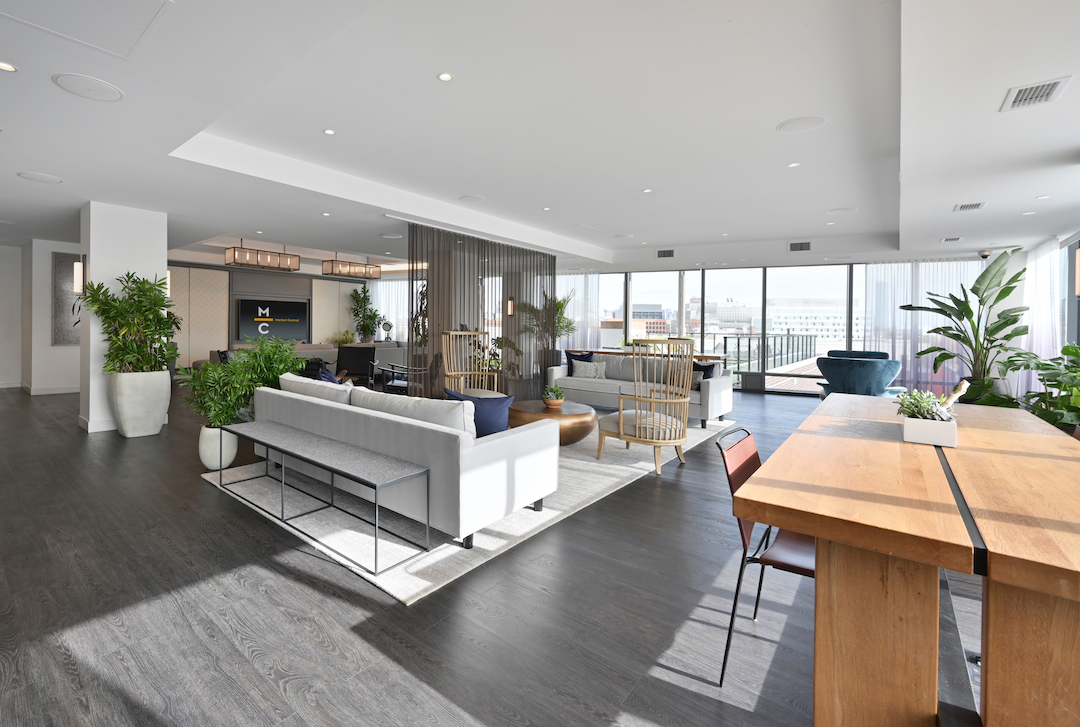
Photo: @flauntboston
This space, adjacent to an outdoor terrace, shows a variety of seating choices for indoor or outdoor lounge seating so that residents can be distanced from others, if they wish, or can congregate in different sized groups.
The owner, Twining Properties, made adjustments in April 2020, right at the start of pandemic, to install MERV 13 UV filters.
The unit floor plans were reworked to allow space for desks, and Twining Properties offered exclusive discounts through office furniture companies to accommodate the rapidly changing home office paradigm.
Photo: @flauntboston
In the fitness center, plexiglass separations were fitted between pieces of actively used equipment and placed on foot pads so that they can be shifted around as needed.
Air grilles above the equipment show evidence of the HVAC upgrade with MERV 13 filters. Attractive, well-equipped fitness centers are crucial to the success of the leasing program for upscale urban multifamily communities.
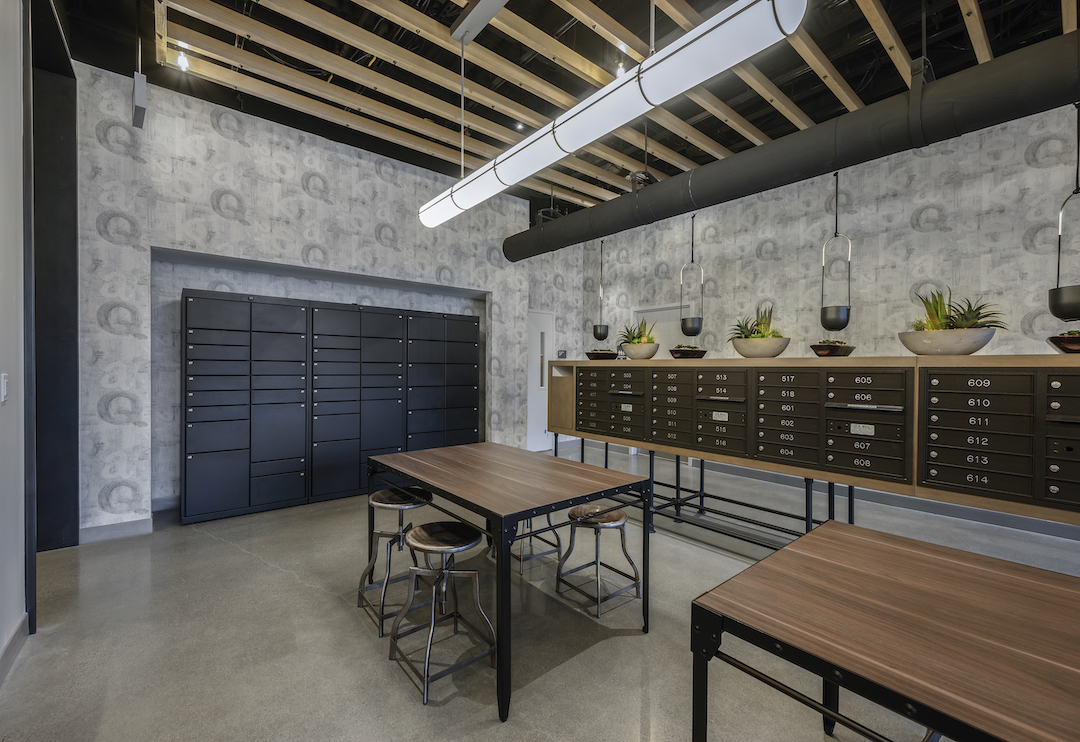
Photo: @flauntboston
The property has three package centers: a large Luxer One-managed locker center, a concierge package room, and a “non-concierge” mail center. This configuration reduced overlap and crowding by residents congregating in a single package station.
The ductwork across the ceiling of the package center was tied to the MERV 13 filters.
At the start of the pandemic, cardboard waste was piling up in the package center as residents started receiving more and more packages, so additional bins for cardboard collection were brought in. Hand sanitation stations were added later.
THE SMITH – A TWO-STAR FITWEL FIRST
The Smith, the first multifamily project to achieve Fitwel Multifamily Residential v2.1 certification (2 stars), provides residents ample access to a variety of outdoor spaces.
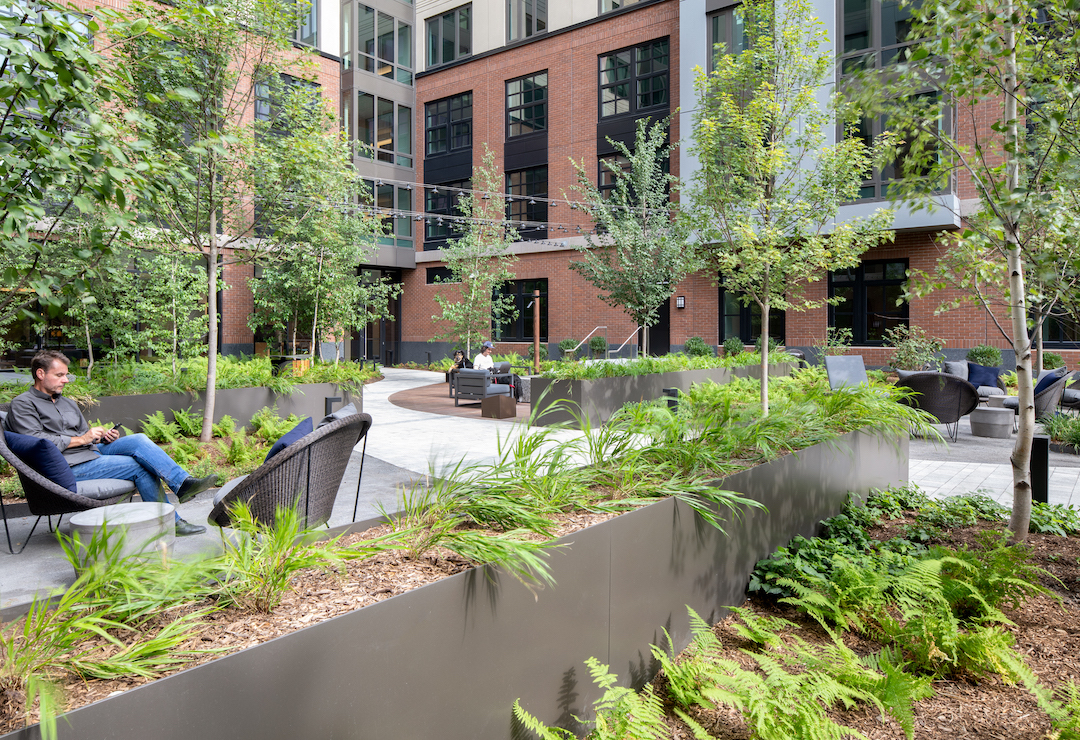
Photo: Ed Wonsek
Leggat McCall Properties and BentallGreenOak were the developers of the 300-unit LEED Silver property at 89 East Dedham St., Boston.
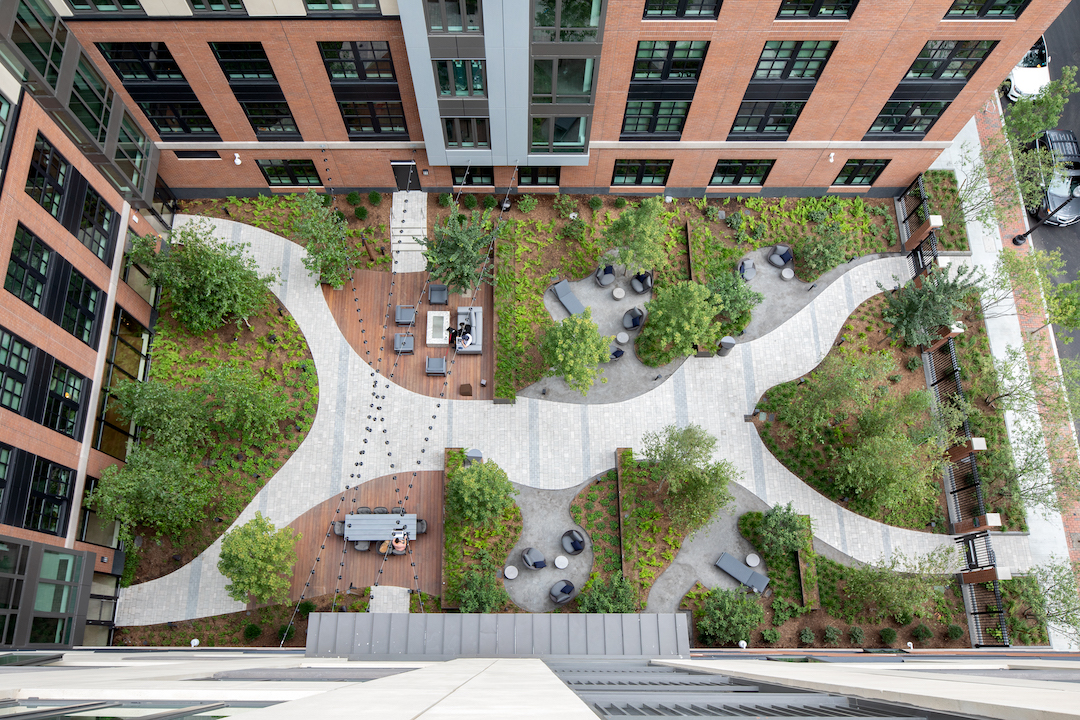
Photo: Ed Wonsek
Access to nature and outdoor light, as shown here, is a key element of Fitwel. The picnic table gets lots of use by tenants working from home. Here, a tenant works on a laptop adjacent to a public street in Boston’s South End.
The openness of the space and the orientation of the structure bring sunlight into the residential units.
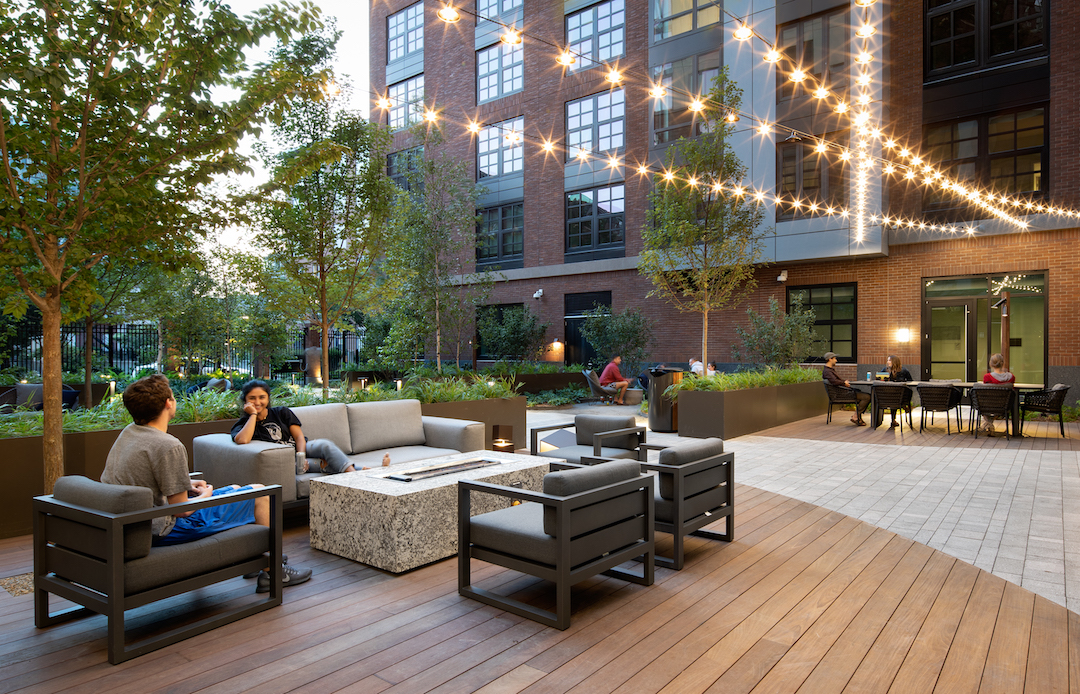
Photo: Ed Wonsek
We are finding that carving spaces into smaller, somewhat divided pods allows a greater variety of seating options.
Two people who live together can safely occupy a more isolated space while distanced from others using the remaining outdoor amenity areas.
ECHELONSEAPORT – BOSTON'S BIGGEST AMENITIES PACKAGE
At EchelonSeaport, designed in collaboration with KPF and Jeffrey Beers International, the building massing was designed to maximize views.
Many residences get an outdoor terrace that is like an extra room to the outdoors. Some of the terraces wrap around two or three sides, providing multiple visual options.
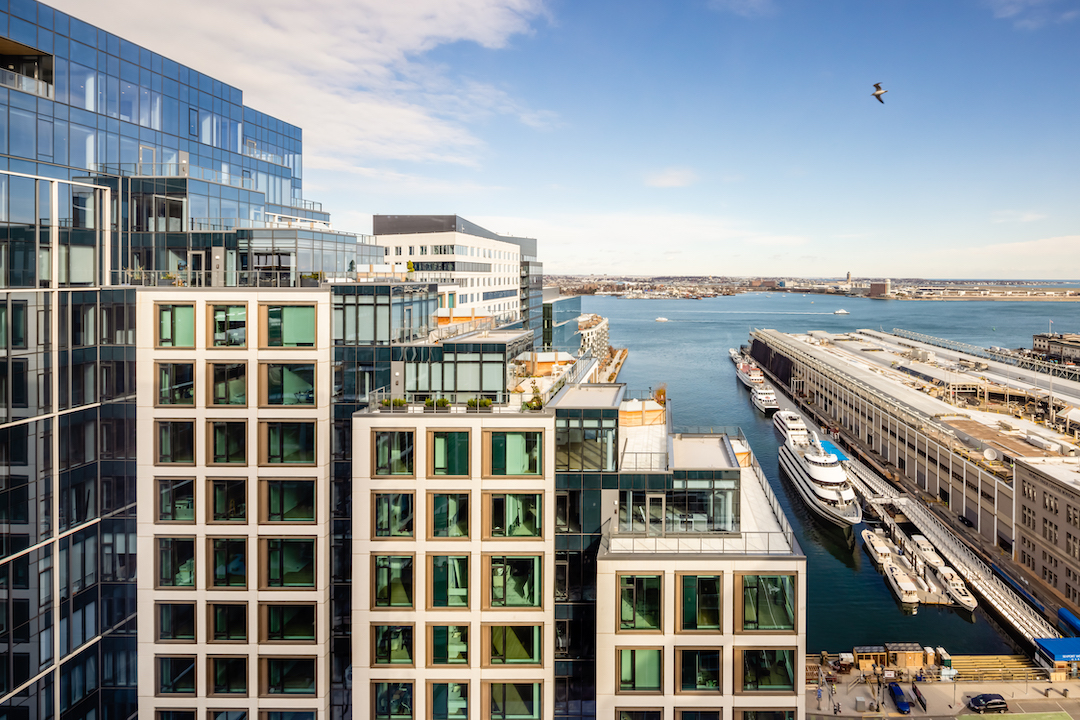
Photo: Raj Das
The developer, Cottonwood, offered the largest amenity package in the city: 60,000 sf of amenities, including a terrace with an outdoor pool, an indoor pool, and a 10,000-sf green roof.
There are 270 luxury residences at The Alyx, EchelonSeaport’s apartment offering. Condo owners at 133 Seaport (255 units) and 135 Seaport (192 units) have access to all amenities; residents of The Alyx can use the pool and outdoor deck.
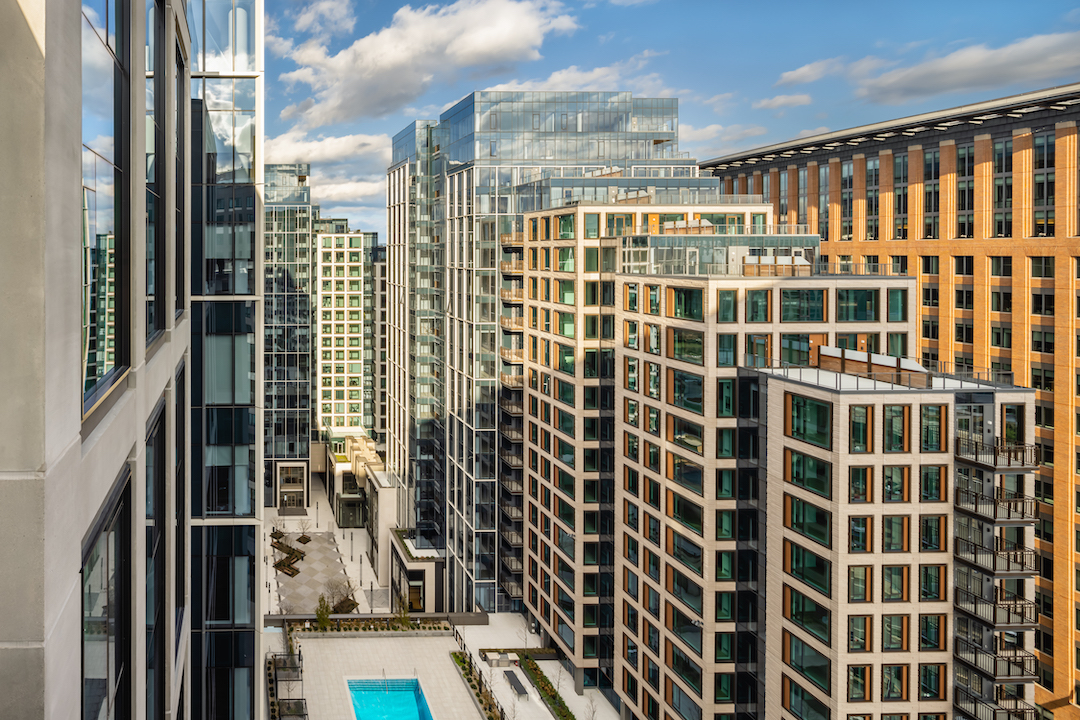
Photo: Raj Das
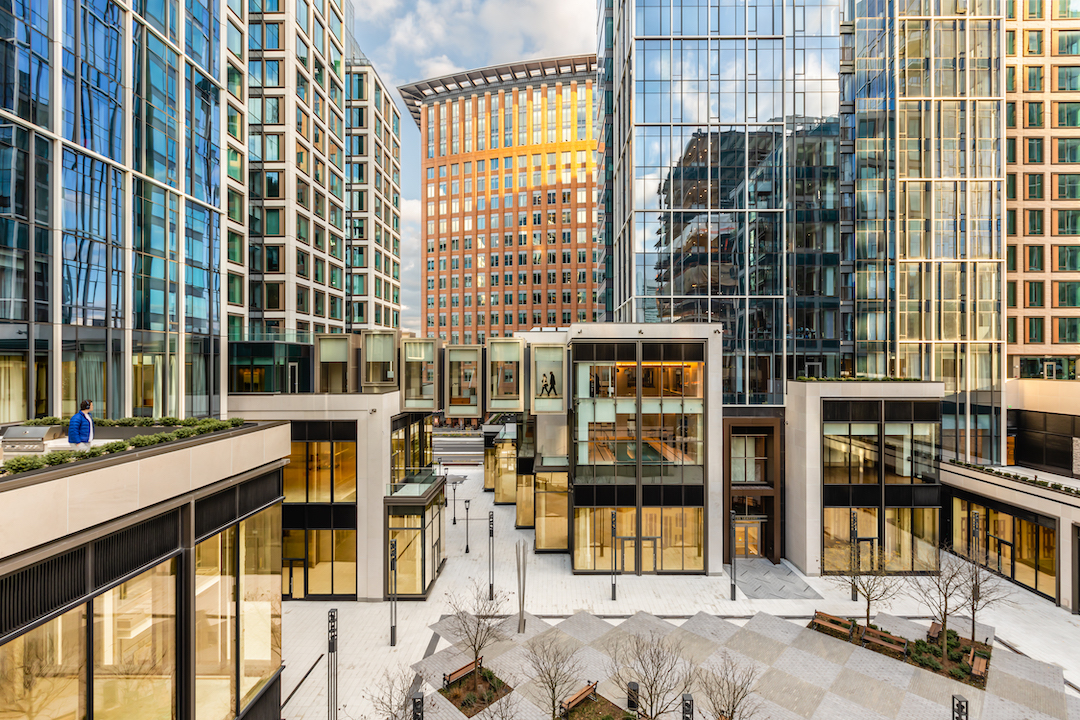
Photo: Raj Das
A tenant fires up a grill on a terrace overlooking the ground-floor public plaza, which features retail and restaurant options.
PIER 4 – OPENING UP TO THE OUTDOORS
Nearly all of the 106 condos at the nine-story PIER 4, designed in collaboration with SHoP Architects, have been sold. Every residence has a private outdoor terrace; its penthouse units have private roof decks with gas and water access to extend living spaces to the outdoors.
Each in-unit balcony features a glass front wall and solid sides to maximize harbor views from the interior and on the balcony.
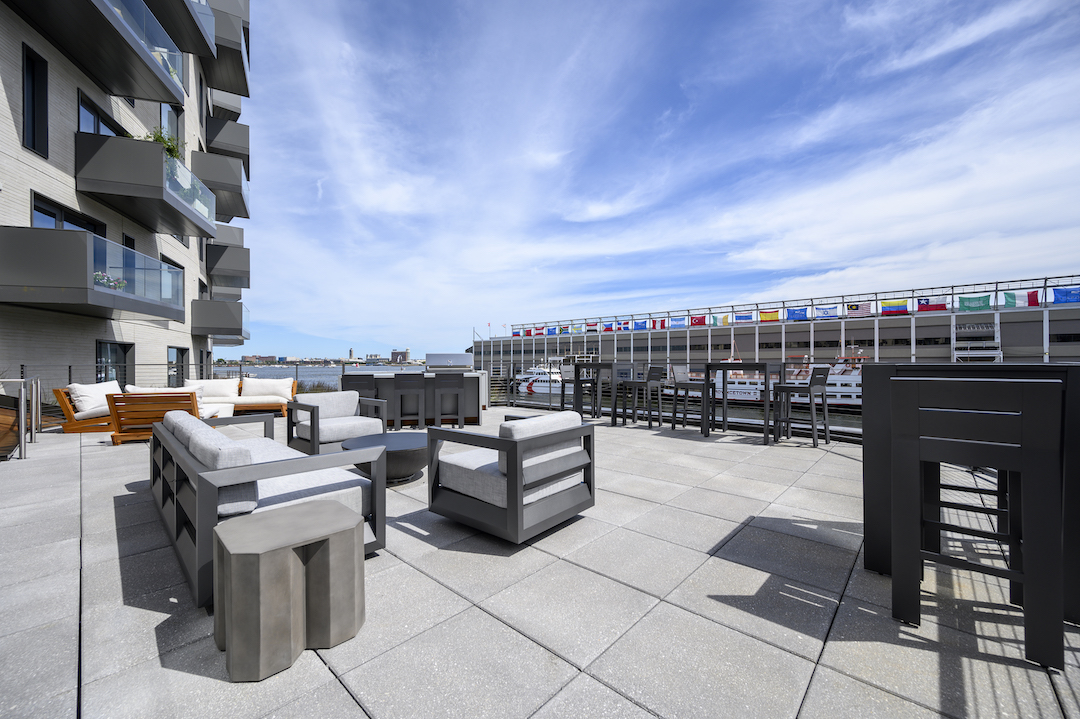
Photo: @flauntboston
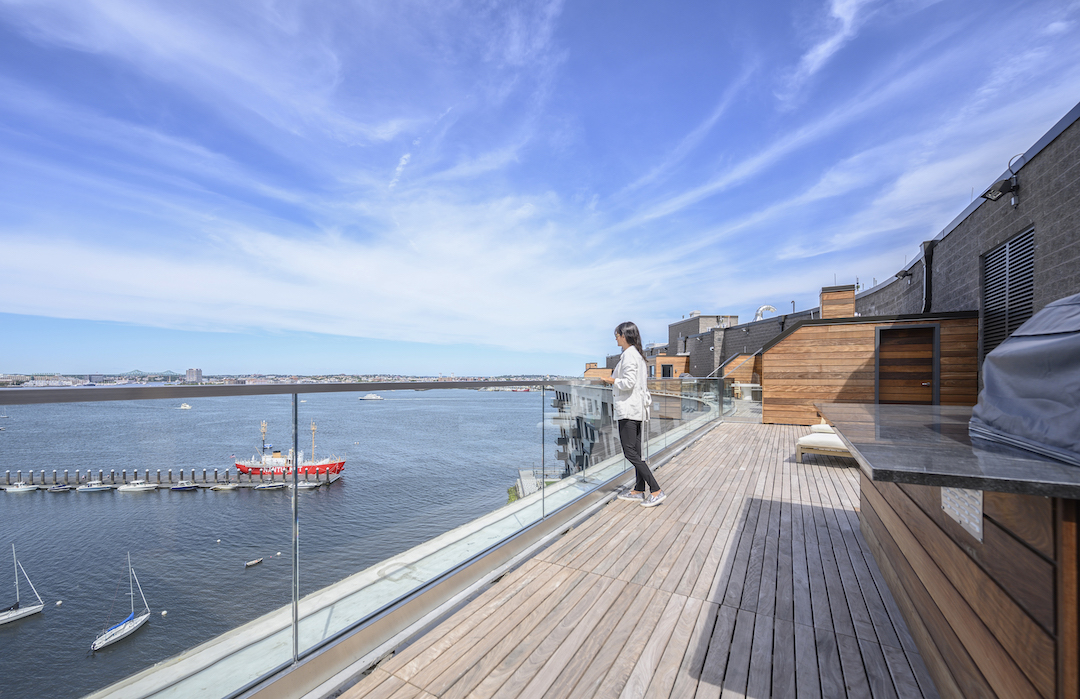
Photo: @flauntboston
The building massing steps back, creating wide-open views of Boston Harbor. Here, a resident takes advantage of the roof deck, which is crafted from sustainably harvested ipe.
The roof decks are supplied with gas for grills, firepits, and overhead heaters to meet resident demand for active outdoor space.
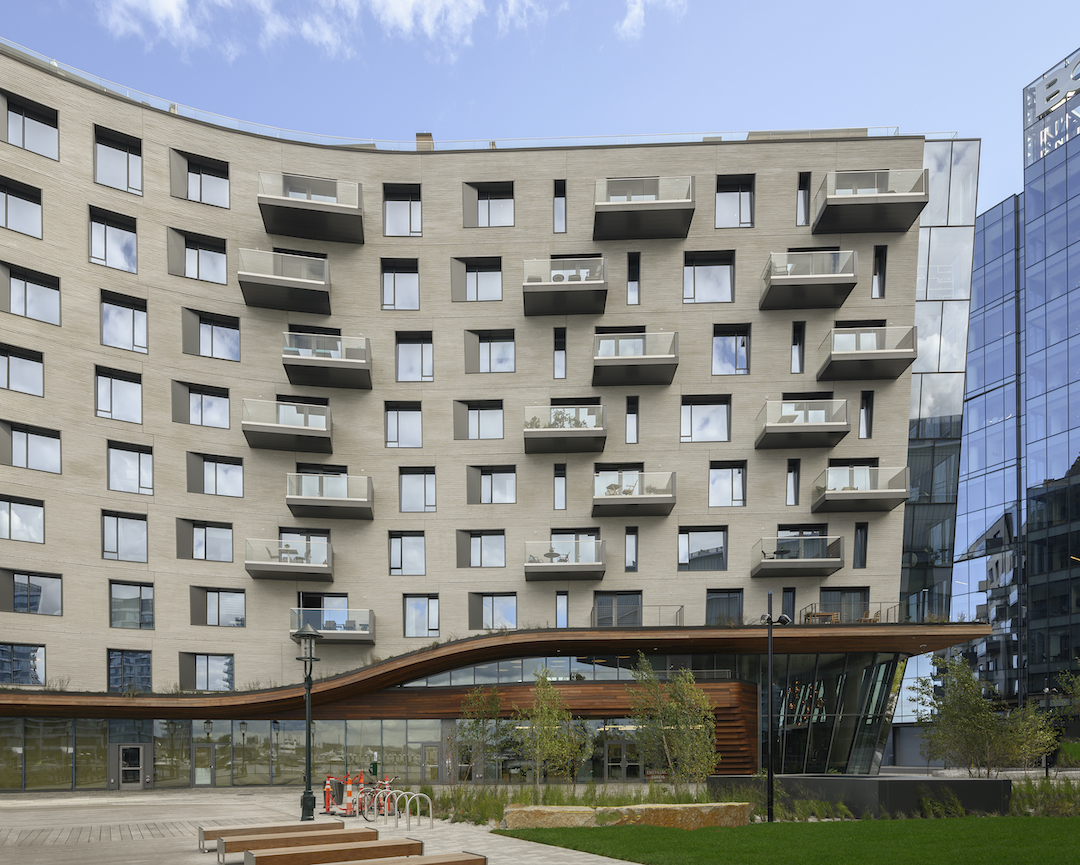
Photo: @flauntboston
Outdoor balconies face new public green space along the Harbor Walk. Developer Tishman Speyer added wood decking, benches, and trees to the public park, which connects to a popular and scenic public walkway.
The park was designed to address resiliency on the harbor, while also encouraging pedestrian interaction with the water.
IMPLEMENTING NEW MULTIFAMILY DESIGN REFINEMENTS
The projects discussed here were completed just before or during the early days of the pandemic.
In our new work, we are implementing new design elements to further accommodate the work from home experience and the health and wellness concerns of tenants:
- Den design: We now put the den on the window wall instead of inside, to open the workspace to the outdoors and bring in more sunlight.
- Bedrooms are being equipped with sliding glass doors, to allow more natural light to penetrate the interior.
- We’re giving more attention to balconies, to allow for clean, fresh air to be brought into the living units.
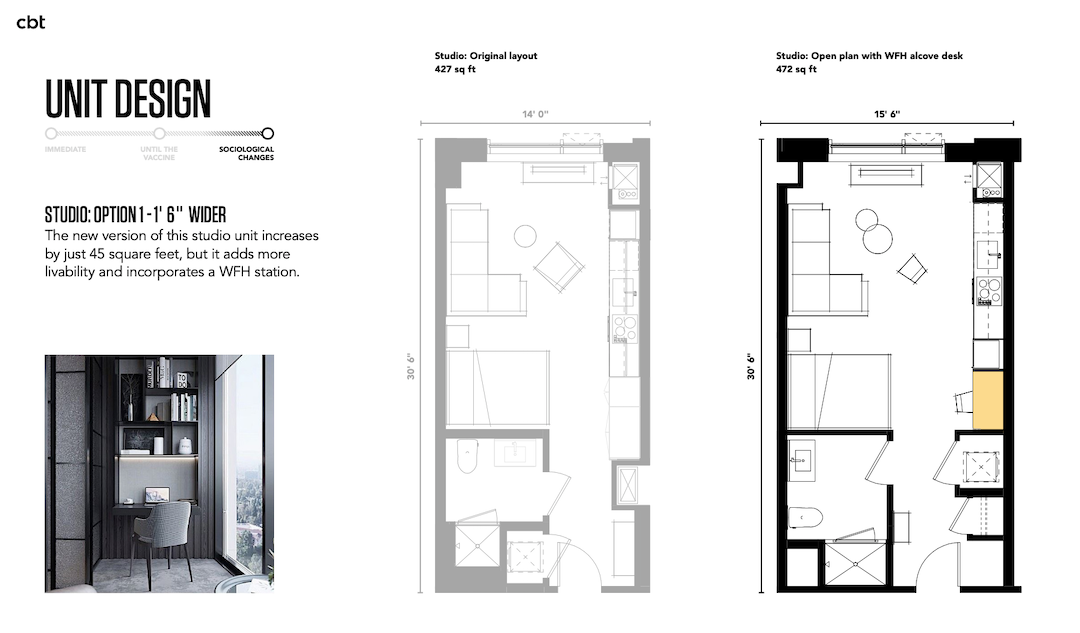
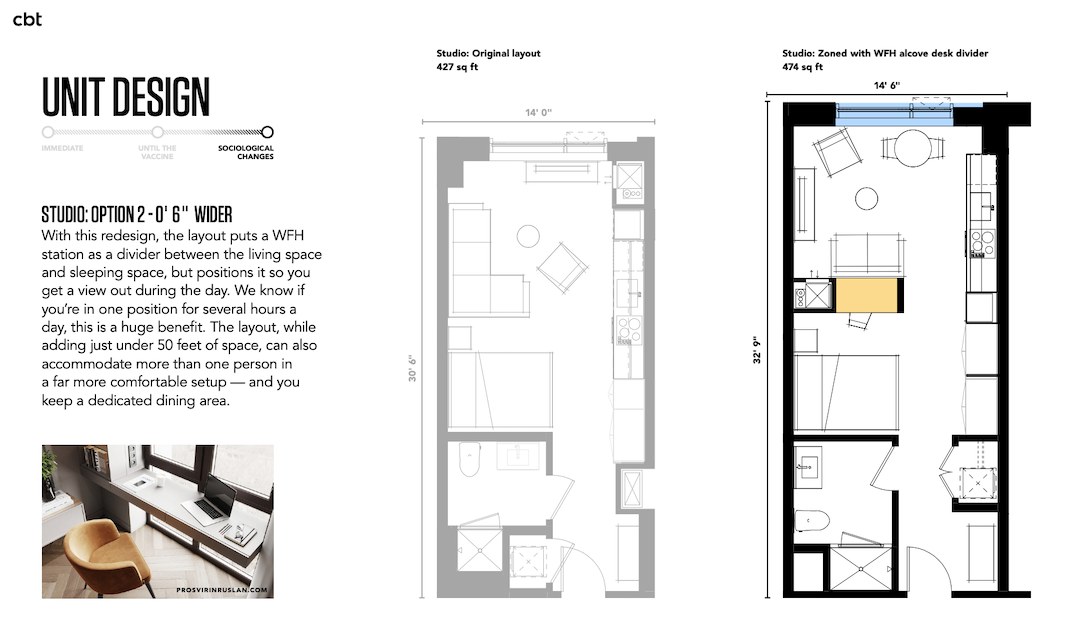
As we at CBT have learned from these projects, using the tenant experience as the central force behind design creates a living environment that outlasts current trends and is useful for years to come.
Building elements that were considered to be conveniences pre-pandemic are now essential for residents’ evolving lifestyles. As needs change, these spaces can be easily reimagined to maintain a building’s timeless nature.
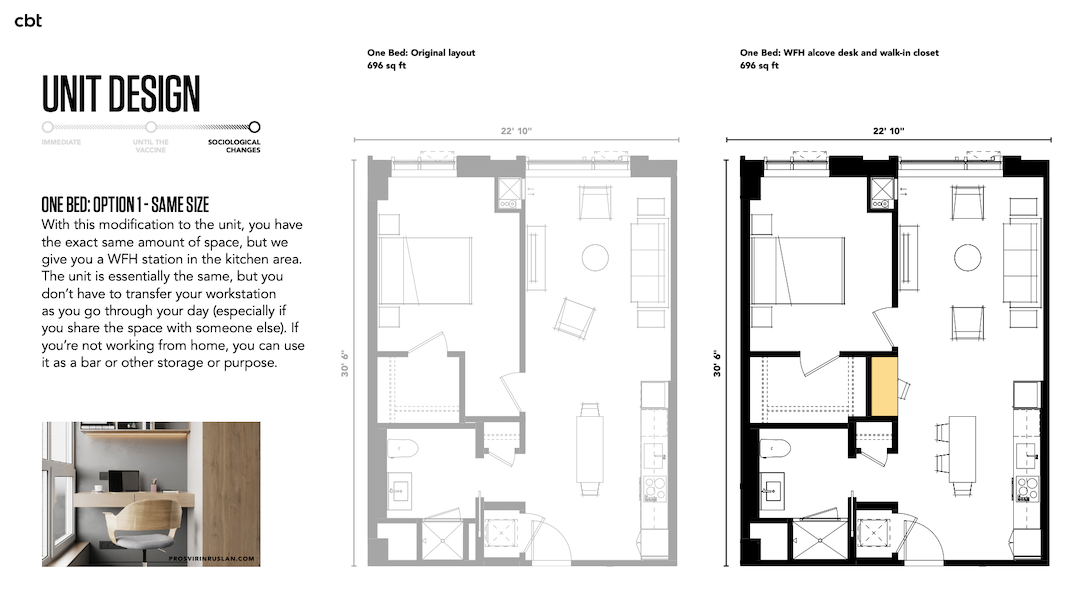
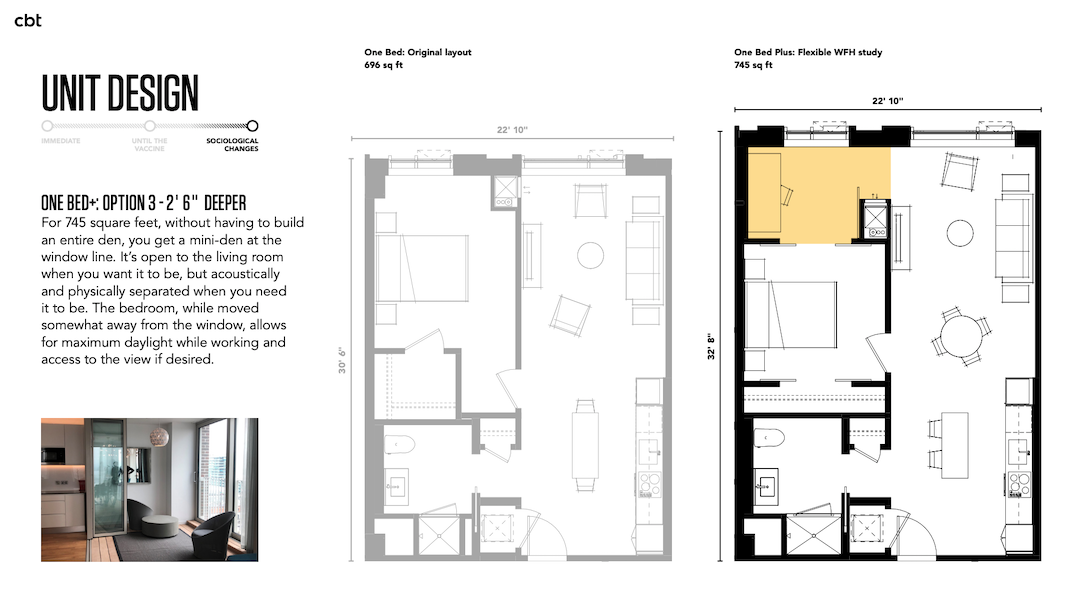
ABOUT THE AUTHOR
Vickie Alani, a Principal at CBT, Boston, has over 30 years’ experience in architecture and interior design, with specialized expertise in multifamily residential and hospitality design. She received BArch and BFA degrees from the Rhode Island School of Design.
Related Stories
| Mar 17, 2011
Perkins Eastman launches The Green House prototype design package
Design and architecture firm Perkins Eastman is pleased to join The Green House project and NCB Capital Impact in announcing the launch of The Green House Prototype Design Package. The Prototype will help providers develop small home senior living communities with greater efficiency and cost savings—all to the standards of care developed by The Green House project.
| Mar 11, 2011
Renovation energizes retirement community in Massachusetts
The 12-year-old Edgewood Retirement Community in Andover, Mass., underwent a major 40,000-sf expansion and renovation that added 60 patient care beds in the long-term care unit, a new 17,000-sf, 40-bed cognitive impairment unit, and an 80-seat informal dining bistro.
| Mar 11, 2011
Mixed-income retirement community in Maryland based on holistic care
The Green House Residences at Stadium Place in Waverly, Md., is a five-story, 40,600-sf, mixed-income retirement community based on a holistic continuum of care concept developed by Dr. Bill Thomas. Each of the four residential floors houses a self-contained home for 12 residents that includes 12 bedrooms/baths organized around a common living/social area called the “hearth,” which includes a kitchen, living room with fireplace, and dining area.
| Mar 11, 2011
Texas A&M mixed-use community will focus on green living
HOK, Realty Appreciation, and Texas A&M University are working on the Urban Living Laboratory, a 1.2-million-sf mixed-use project owned by the university. The five-phase, live-work-play project will include offices, retail, multifamily apartments, and two hotels.
| Mar 1, 2011
How to make rentals more attractive as the American dream evolves, adapts
Roger K. Lewis, architect and professor emeritus of architecture at the University of Maryland, writes in the Washington Post about the rising market demand for rental housing and how Building Teams can make these properties a desirable choice for consumer, not just an economically prudent and necessary one.
| Feb 15, 2011
New Orleans' rebuilt public housing architecture gets mixed reviews
The architecture of New Orleans’ new public housing is awash with optimism about how urban-design will improve residents' lives—but the changes are based on the idealism of an earlier era that’s being erased and revised.
| Feb 11, 2011
Chicago high-rise mixes condos with classrooms for Art Institute students
The Legacy at Millennium Park is a 72-story, mixed-use complex that rises high above Chicago’s Michigan Avenue. The glass tower, designed by Solomon Cordwell Buenz, is mostly residential, but also includes 41,000 sf of classroom space for the School of the Art Institute of Chicago and another 7,400 sf of retail space. The building’s 355 one-, two-, three-, and four-bedroom condominiums range from 875 sf to 9,300 sf, and there are seven levels of parking. Sky patios on the 15th, 42nd, and 60th floors give owners outdoor access and views of Lake Michigan.
| Feb 11, 2011
Sustainable community center to serve Angelinos in need
Harbor Interfaith Services, a nonprofit serving the homeless and working poor in the Harbor Area and South Bay communities of Los Angeles, engaged Withee Malcolm Architects to design a new 15,000-sf family resource center. The architects, who are working pro bono for the initial phase, created a family-centered design that consolidates all programs into a single building. The new three-story space will house a resource center, food pantry, nursery and pre-school, and administrative offices, plus indoor and outdoor play spaces and underground parking. The building’s scale and setbacks will help it blend with its residential neighbors, while its low-flow fixtures, low-VOC and recycled materials, and energy-efficient mechanical equipment and appliances will help it earn LEED certification.
| Feb 11, 2011
Apartment complex caters to University of Minnesota students
Twin Cities firm Elness Swenson Graham Architects designed the new Stadium Village Flats, in the University of Minnesota’s East Bank Campus, with students in mind. The $30 million, six-story residential/retail complex will include 120 furnished apartments with fitness rooms and lounges on each floor. More than 5,000 sf of first-floor retail space and two levels of below-ground parking will complete the complex. Opus AE Group Inc., based in Minneapolis, will provide structural engineering services.
| Jan 27, 2011
Perkins Eastman's report on senior housing signals a changing market
Top international design and architecture firm Perkins Eastman is pleased to announce that the Perkins Eastman Research Collaborative recently completed the “Design for Aging Review 10 Insights and Innovations: The State of Senior Housing” study for the American Institute of Architects (AIA). The results of the comprehensive study reflect the changing demands and emerging concepts that are re-shaping today’s senior living industry.














